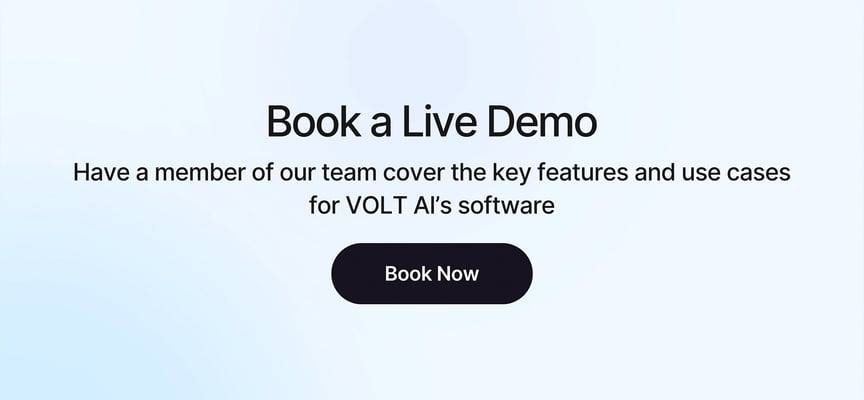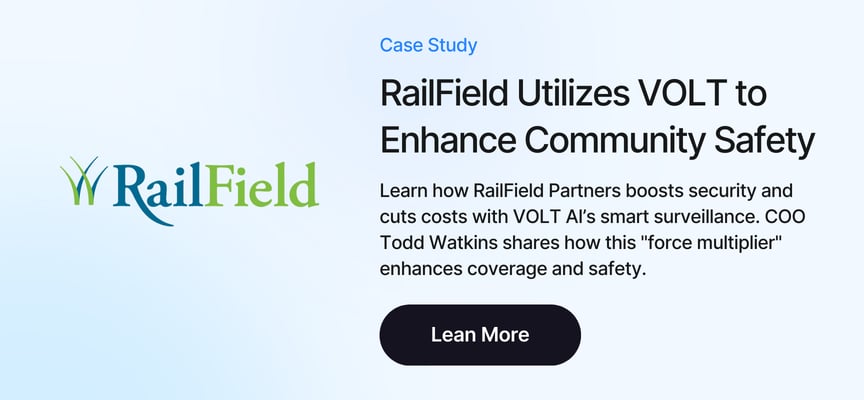Security directors face a common dilemma: how to maximize protection while controlling costs. Remote video monitoring directly addresses this challenge by fundamentally changing how surveillance operates. Unlike traditional on-site security where staff physically monitor premises, remote video monitoring moves surveillance operations to centralized facilities where trained professionals monitor multiple locations simultaneously using advanced technology.
This approach transforms security from a location-dependent operation to a specialized service that leverages economies of scale, technical expertise, and cutting-edge tools that would be impractical to implement at individual sites. For organizations seeking improved security outcomes with predictable costs, remote monitoring offers compelling advantages over traditional approaches.
Read Now: How video monitoring is transforming with AI Powered Intelligence
What Makes Remote Video Monitoring Different?
Remote monitoring combines several key elements that distinguish it from both traditional guarding and simple camera recording:
- Centralized Operations Centers: Dedicated facilities staffed with security professionals specifically trained in video monitoring
- Advanced Technology Integration: Implementation of AI detection, two-way audio, and specialized monitoring software
- Scalable Coverage Model: The ability to monitor multiple locations from a single center with consistent protocols
- Intervention Capabilities: Direct communication with site personnel, security teams, or emergency services
- Documented Accountability: Comprehensive logging of surveillance activities, detections, and responses
This operational model delivers capabilities that traditional approaches cannot match, particularly for organizations with multiple locations or complex security needs.

5 Key Benefits That Drive Remote Monitoring Adoption
Let’s talk about the measurable value remote video monitoring can deliver.
1. Dramatic Cost Reduction vs. On-Site Security
Remote monitoring typically costs 60-70% less than staffing equivalent on-site security personnel. This cost difference becomes particularly significant for organizations requiring 24/7 coverage or protection across multiple locations.
Example: A retail chain with 12 locations previously employed overnight security guards at each site (36 FTEs total). By switching to remote video monitoring, they maintained comprehensive security while reducing annual costs.
Implementation Note: Many organizations implement hybrid models, maintaining limited on-site security during high-traffic periods while using remote monitoring during overnight hours or at lower-risk locations.
2. Specialized Expertise and Consistent Standards
Remote monitoring centers employ professionals specifically trained in video surveillance techniques, detection protocols, and emergency response coordination. This specialization typically exceeds the training level of general security staff.
Example: A manufacturing facility struggled with inconsistent security coverage as on-site guards frequently rotated between locations. After switching to remote monitoring, they gained access to specialized monitoring personnel trained specifically in industrial security protocols, resulting in more consistent threat identification and response.
Implementation Note: When evaluating remote monitoring providers, examine their training programs, industry specialization, and personnel retention rates to ensure quality and consistency.
3. Technology Leverage Beyond Individual Site Capabilities
Remote monitoring centers invest in advanced technologies that would be impractical to implement at individual sites, including AI-enhanced detection, multi-site correlation analysis, and sophisticated communication systems.
Example: A hospital network implemented remote monitoring that included thermal detection capabilities for identifying potential trespassers in outdoor areas—a technology investment that would have been prohibitively expensive to implement at each individual facility.
Implementation Note: The technology capabilities of different monitoring centers vary significantly. Evaluate providers based on the specific technologies they employ rather than general marketing claims.
4. Adaptable Coverage Without Staffing Constraints
Remote monitoring allows organizations to easily adjust surveillance intensity based on changing needs without complex staffing changes or contractual modifications.
Example: A distribution center experiences seasonal volume fluctuations requiring different security protocols throughout the year. Their remote monitoring service adjusts coverage intensity and monitored zones based on a predetermined schedule, automatically implementing more comprehensive monitoring during peak periods.
Implementation Note: Establish clear protocols for how monitoring intensity can be adjusted based on business cycles, special events, or threat levels.
5. Enhanced Documentation and Accountability
Remote monitoring creates comprehensive digital records of all security activities, providing valuable documentation for investigations, liability protection, and security improvement.
Example: A property management company faced a premises liability lawsuit claiming inadequate security. Their remote monitoring service provided timestamped records of all surveillance activities throughout the relevant period, demonstrating appropriate security measures and helping resolve the case favorably.
Implementation Note: Define your documentation requirements in advance, including retention policies, access protocols, and integration with incident management systems.
Visit the full AI security camera resource center
Remote Monitoring Applications Across Industries
Different sectors benefit from remote monitoring in unique ways. Here's how various industries are leveraging this approach:

Retail
Retailers use remote monitoring to address their specific security challenges:
- After-hours protection with immediate response to break-ins
- Shrinkage reduction through employee monitoring in high-value areas
- Delivery verification with documented receiving processes
- Customer service integration where monitoring centers also observe customer wait times or service needs
Case Example: A national pharmacy chain implemented remote monitoring across 230 locations, reducing after-hours burglary attempts through active intervention and law enforcement coordination.
Construction & Development
The temporary nature of construction sites makes them ideal for remote monitoring:
- Equipment theft prevention through after-hours surveillance
- Site access monitoring to prevent unauthorized entry
- Progress monitoring that combines security with project management
- Weather event alert systems that notify when conditions threaten site integrity
Case Example: A residential developer reduced monthly losses from material theft after implementing remote monitoring with automated voice warnings and law enforcement coordination.

Healthcare
Healthcare facilities use remote monitoring to enhance both security and patient safety:
- Parking area protection to ensure staff safety during shift changes
- Medication storage monitoring with specialized protocols for controlled substances
- Patient wandering detection that alerts staff to at-risk patients leaving safe areas
- Visitor management support during off-hours or at limited-staff entrances
Case Example: A metropolitan hospital network implemented remote monitoring across five facilities, coordinating with on-site security. They experienced a reduction in parking area incidents and reduction in unauthorized access attempts.

Property Management
Multi-family and commercial properties leverage remote monitoring to enhance tenant safety:
- Common area surveillance with intervention capabilities
- Package theft prevention in delivery areas
- Amenity space monitoring to prevent unauthorized use or damage
- Occupancy pattern analysis that informs property management decisions
Case Example: A luxury apartment complex implemented remote monitoring as a resident amenity, promoting the enhanced security in their marketing. They achieved 100% occupancy within three months of implementation, citing the security system as a key differentiator from competing properties.
Selecting the Right Remote Monitoring Partner
Not all remote monitoring services offer the same capabilities or quality. Consider these factors when evaluating potential providers:
Monitoring Center Credentials
The physical monitoring center's capabilities directly impact service quality:
- UL Listing: Verify the center meets UL 827B standards for remote monitoring
- Redundancy Systems: Confirm backup power, multiple internet connections, and disaster recovery capabilities
- Physical Security: The monitoring center itself should maintain robust physical security protocols
- Staffing Models: Examine personnel-to-site ratios and coverage during peak incident periods
Detection Technology Integration
The monitoring center's technology platform significantly impacts effectiveness:
- AI Analysis Capabilities: Evaluate how the provider uses artificial intelligence for initial threat detection
- False Alarm Management: Examine processes for filtering out false positives before operator involvement
- Multi-Site Correlation: Verify if the system can identify patterns across multiple properties
- Integration Flexibility: Ensure compatibility with your existing camera systems and security infrastructure
Response Protocols and Capabilities
The actions taken when threats are detected determine ultimate effectiveness:
- Escalation Procedures: Review detailed response protocols for different types of security events
- Communication Methods: Evaluate options for contacting on-site personnel, including mobile apps and direct calls
- Law Enforcement Coordination: Verify established relationships with local emergency services
- Intervention Options: Assess capabilities like two-way audio, sirens, or strobe lights for direct intervention
Performance Metrics and Reporting
Accountability through measurable results ensures ongoing service quality:
- Response Time Standards: Request average and maximum response times for different alert types
- Incident Documentation: Review sample reports for thoroughness and usability
- Success Metrics: Examine how the provider measures and reports effectiveness
- Client Portal Capabilities: Evaluate tools provided for reviewing incidents and accessing reports
Implementation Best Practices
Successfully implementing remote video monitoring requires careful planning and execution:
1. Start With a Clear Security Assessment
Before implementing remote monitoring, conduct a comprehensive security assessment:
- Identify specific vulnerabilities and security objectives
- Map existing camera coverage and identify gaps
- Document current security incidents and patterns
- Establish measurable goals for the new monitoring system
This assessment provides the foundation for designing an effective monitoring program tailored to your specific needs.
2. Design for Effective Intervention
Camera placement should focus on enabling effective intervention, not just recording:
- Position cameras to provide clear views of approach paths to vulnerable areas
- Implement two-way audio capabilities in key locations
- Create overlapping coverage zones that eliminate blind spots
- Consider lighting requirements for effective nighttime monitoring
The goal is creating a system where remote monitors can effectively detect, verify, and respond to potential threats.
3. Establish Clear Communication Protocols
Successful remote monitoring depends on effective communication between monitoring center personnel and on-site responders:
- Document contact information for all potential responders by time and day
- Create escalation procedures for different types of security events
- Establish confirmation protocols for alert receipt and response
- Schedule regular communication tests to verify system effectiveness
These protocols ensure appropriate responses when security events occur.
4. Plan for Continuous Improvement
Remote monitoring systems should evolve based on operational experience:
- Schedule quarterly reviews of all security events and responses
- Analyze patterns to identify systemic vulnerabilities
- Update monitoring protocols based on emerging trends
- Test system components regularly to ensure proper operation
This continuous improvement approach ensures your security system remains effective as threats evolve.
.jpg?width=2256&height=1424&name=Image%20(3).jpg)
The Future of Surveillance is Remote
Remote video monitoring represents the future of surveillance for most organizations, offering superior protection at lower costs compared to traditional approaches. By leveraging specialized expertise, advanced technology, and economies of scale, remote monitoring delivers security capabilities that individual organizations would struggle to implement independently.
For security directors evaluating protection options, remote monitoring offers a compelling alternative to traditional security approaches. The combination of improved coverage, specialized expertise, and cost efficiency makes this model particularly attractive for organizations with multiple locations or 24/7 security requirements.
As technology continues advancing, remote monitoring capabilities will further expand through improved AI detection, more sophisticated intervention options, and deeper integration with other security and business systems. Organizations implementing these systems today gain immediate security benefits while positioning themselves to leverage future advancements.
Ready to explore how remote video monitoring can enhance your organization's security while reducing costs? Schedule a demo with VOLT to discover how our intelligent remote monitoring platform can transform your security operations.




